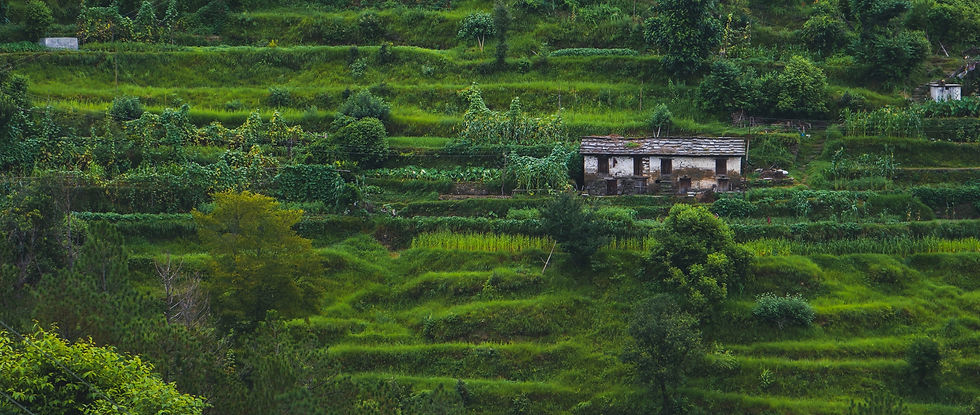Almora, Uttarakhand
- Team Himalayan Journal

- Sep 8, 2020
- 3 min read
Almora city is the administrative headquarters of Almora district and is in the state of Uttarakhand, northern India. Situated on a mountain range in the Himalayan foothills, this city is located about 275 km northeast of New Delhi.
In 1970, the Gurkhas captured Almora and built a fort at the eastern end of the mountain range. Another fort is located at the western end. In 1815, the Gorkhas suffered defeat at the hands of the British near Almora. It is an agricultural trade center and also has some manufacturing units and a college affiliated to Kumaon University. This city is connected to the south cities by road.

Highlights
This small city of Uttarakhand, which is situated in the lap of nature, has a large history in itself.
State: Uttarakhand
District: Almora
Location: The city is located at a distance of 90 km by road from Haldwani.
Famous: Devidhura Fair, Purnagiri Fair
How to reach: Can be reached by bus and taxi from any city. The nearest airport is Pantnagar Airport and Kathgodam is the nearest Railway Station.
History of Almora
Almora is a hill town in the Kumaon hills. It was an unknown place until 1563 AD. By this year the local hill chieftain Chandraja Balo Kalyanchand made it his capital. At that time it was called Rajapur. On historical grounds, it can be said that the ancient dynasty of Kumaon was called Katyuri. Henry Elliot has tried to prove the Katyuri rulers to be Khajatyas but according to the local tradition they were descendants of the Suryavanshi kings of Ayodhya.
The region of the Chandrajaas began in Kumaon in the 7th century. In 1797, Almora was captured by the Gorkhas from the Katyuris and merged into Nepal. Sugauli Treaty after the Battle of British and Gorkhas in 1816 AD According to it, along with many other hill places, Almora also got the right of the British.

The major tourist destination of Almora
Champawat
There is also Katarmal Sun Temple and tea gardens for tourists. This historical city of Uttarakhand has a religious, and culturally leading place. The city is also mentioned in the religious texts of India. Baleshwar temple established by the kings of the Katyuri dynasty.

Ranikhet
Ranikhet is a very small hill station surrounded by deodar and oak trees.

Doonagiri
It is said in Janashruti that Hanuman took Sanjeevani from this mountain (Dronagiri) when Lakshmana was in power in Lanka.
Granath
There is an ancient temple of Lord Shiva, whose idol is considered very beautiful and divine.
Dwarahat
The remains of many temples from the 8th to 13th centuries have been found here. There are three classes of temples in Dwarahat - Kachari, Maniya, and Ratnadeva. In addition, many temples are idolized.
Gujaradev Temple
The temple of Gujaradev is the most important temple of Dwarahat. In terms of art, this temple can be called excellent.
Golu Devta Temple
Gawal Devta (Golu Dev) is a history deity of Kumaon in the state of Uttarakhand. It is said that he was the son of the Chand Raja of Champawat.2 They are considered to be a symbol of justice. There is a belief in them that if someone does not get justice anywhere, if they apply at their doorstep, then justice is available immediately.
Katarmal Sun Temple of Almora
Katarmal Surya Mandir is not only the largest and unique temple of the entire Kumaon region but also the oldest ancient sun temple after the Kornak Surya temple of Orissa. It Is located on the Ranikhet Almora road, 12 kilometers before Almora, about two and a half km from the main road, comes to Katarmal village which is also known as Bad Aditya Sun Temple.




Comments